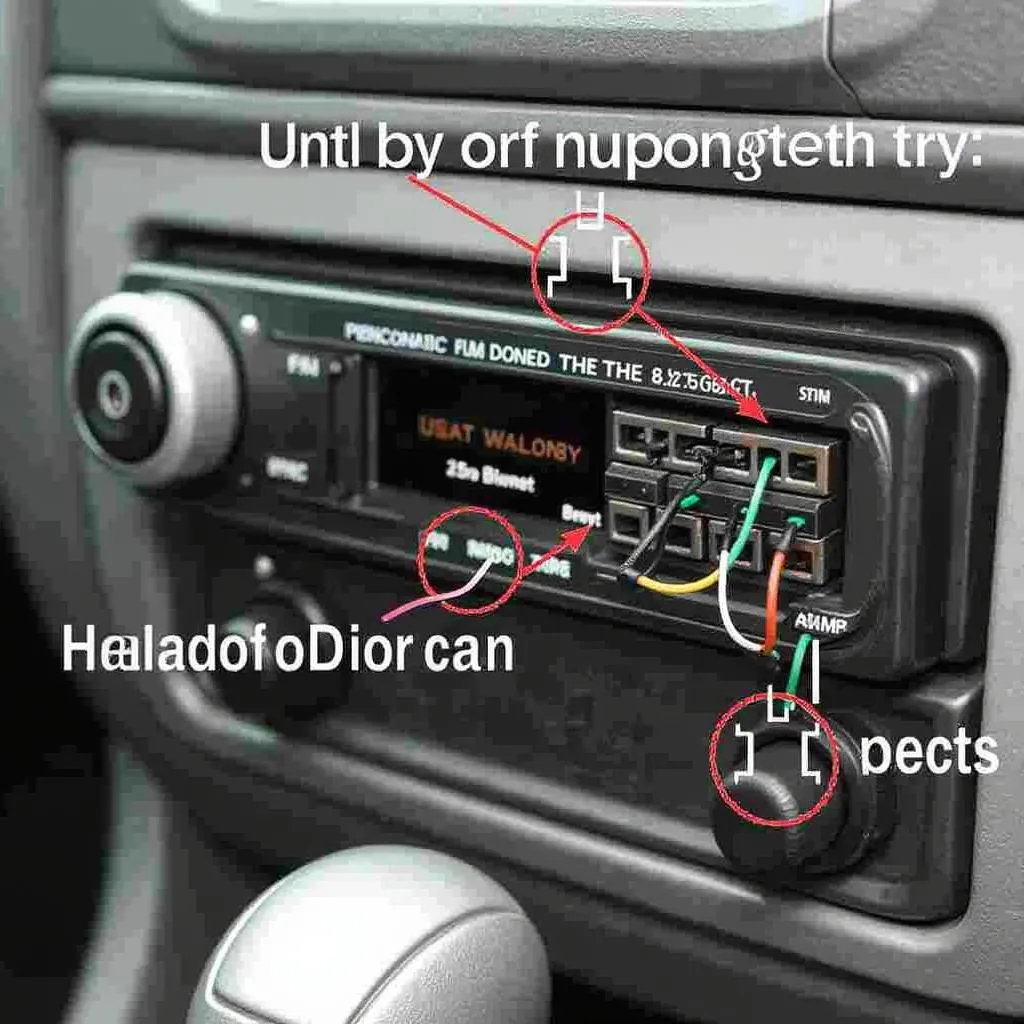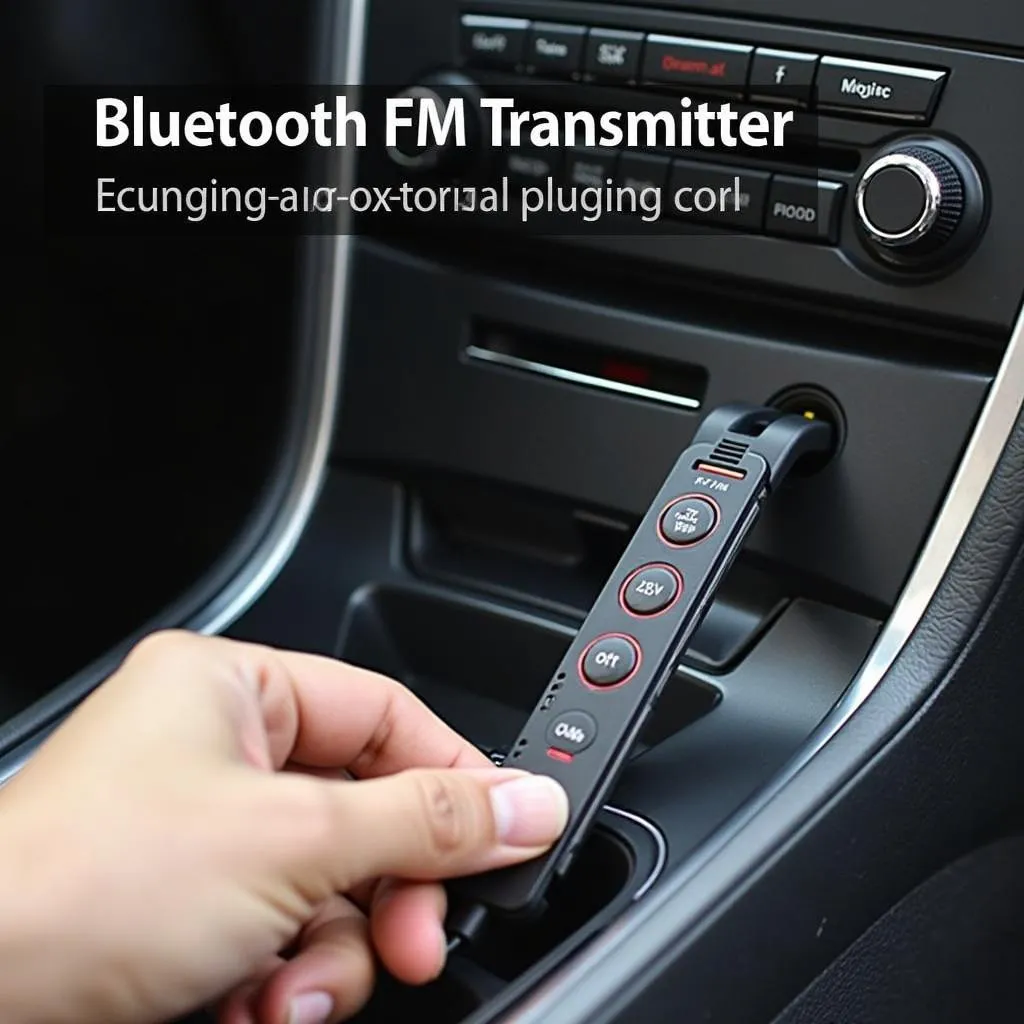When your 2011 GMC Acadia throws a brake warning light, it’s important to address the issue promptly. This light could signal a range of problems, from minor issues requiring simple fixes to serious ones needing professional attention. This article will guide you through the common causes of a brake warning light on a 2011 GMC Acadia and offer possible solutions.
Understanding Your Brake System
Your Acadia’s brake system is complex, involving various components that work together to stop your vehicle safely. These include:
- Brake pads: These friction materials slow down the rotors when you press the brake pedal.
- Brake rotors: These metal discs are attached to the wheels and rotate with them.
- Brake calipers: These clamp the brake pads onto the rotors.
- Brake fluid: This hydraulic fluid transmits pressure from the brake pedal to the calipers.
- Brake lines: These tubes carry the brake fluid.
- ABS (Anti-lock Braking System): This system prevents the wheels from locking up during braking.
- Electronic Brake Control (EBC) Module: This module monitors the brake system and sends warning signals to the driver.
Common Causes of a Brake Warning Light
The brake warning light on your 2011 GMC Acadia can be triggered by a variety of factors, including:
1. Low Brake Fluid
Low brake fluid is a common cause of the brake warning light. Brake fluid absorbs moisture over time, which can reduce its effectiveness. When the brake fluid level drops below a certain point, the warning light will illuminate.
Solution:
- Check the brake fluid reservoir: Locate the reservoir under the hood and check the fluid level. If it’s low, add brake fluid of the correct type.
- Inspect for leaks: Look for signs of brake fluid leaks around the calipers, wheel cylinders, or brake lines. If you find a leak, have it repaired as soon as possible.
2. Worn Brake Pads
Worn brake pads are another common cause of the brake warning light. When the pads wear down, the brake system will detect this and trigger the warning light.
Solution:
- Inspect the brake pads: You can usually inspect the brake pads yourself by looking at the brake rotors through the wheels. If the pads are worn down to the metal, you’ll need to replace them.
- Professional Inspection: It’s recommended to have your brake pads inspected by a professional mechanic. They can assess the condition of your brake system and advise you on whether or not you need to replace your brake pads.
3. Defective Brake Sensors
Brake sensors are small electrical components that monitor the thickness of your brake pads. When the sensors detect that the pads are worn down, they send a signal to the EBC module, which illuminates the warning light.
Solution:
- Inspect the sensors: Check the brake sensors for any damage or corrosion. If they are faulty, they will need to be replaced.
- Professional Diagnosis: A mechanic can use a diagnostic tool to determine if the sensors are functioning correctly.
4. Faulty Brake Calipers
Brake calipers can become faulty due to sticking pistons, seized slides, or other problems. When this happens, the calipers may not be able to clamp the brake pads onto the rotors effectively, leading to a brake warning light.
Solution:
- Inspect the calipers: Look for signs of leaking fluid, sticking pistons, or other problems.
- Professional Repair: If you suspect a faulty caliper, it’s best to have a mechanic diagnose and repair the problem.
5. ABS Problems
The ABS system can malfunction, causing the brake warning light to illuminate. A faulty ABS sensor or a problem with the ABS module can trigger this warning.
Solution:
- Professional Diagnosis: A mechanic can use a diagnostic tool to identify any issues with the ABS system.
- Repair or Replacement: If the ABS sensor or module is faulty, it will need to be repaired or replaced.
6. Brake Line Problems
Damaged or corroded brake lines can cause brake fluid leaks, which can lead to the brake warning light coming on.
Solution:
- Inspect the lines: Carefully inspect the brake lines for any signs of damage or corrosion.
- Professional Repair: If you find any problems, have a mechanic repair or replace the lines.
Addressing the Issue
If your 2011 GMC Acadia’s brake warning light illuminates, it’s crucial to take the following steps:
- Pull over safely: Find a safe place to pull over as soon as possible.
- Check the brake fluid level: Ensure the brake fluid reservoir is full. If not, top it off with the correct type of brake fluid.
- Test the brakes: Gently apply the brakes to assess the braking performance.
- Seek professional assistance: Schedule an appointment with a trusted mechanic as soon as possible for a thorough inspection and diagnosis.
Expert Insights
“It’s always better to be safe than sorry when it comes to your brakes. Don’t ignore the warning light. If you have any doubts about your brake system’s health, consult a professional mechanic.” – [Name of expert], Certified Automotive Technician
“Even if you have a little brake fluid, it’s essential to check the condition of your brake pads. Worn pads are a significant safety hazard and can cause further damage to your brake system.” – [Name of expert], Master Automotive Technician
Frequently Asked Questions
Q: Can I drive my car with the brake warning light on?
A: While you may be able to drive a short distance, it’s not advisable to drive with the brake warning light on. Doing so can be dangerous, as it could indicate a serious problem with your brake system.
Q: How often should I have my brake system inspected?
A: It’s recommended to have your brake system inspected every 6 months or 5,000 miles, whichever comes first.
Q: What is the average cost of replacing brake pads?
A: The cost of replacing brake pads varies depending on the make and model of your vehicle and the type of pads used. However, you can expect to pay between $100 and $300 for brake pad replacement.
Q: What are the signs of worn brake pads?
A: Aside from the warning light, you can often tell your brake pads need replacing by:
- Squealing or grinding noises: This is a common sign of worn brake pads.
- A spongy brake pedal: This could indicate low brake fluid or a problem with the calipers.
- Vibrations during braking: This could indicate warped rotors or uneven brake pad wear.
Q: Can I replace the brake pads myself?
A: While some DIYers may be comfortable replacing brake pads themselves, it’s a complex task that requires specialized tools and knowledge. If you’re unsure, it’s best to leave the job to a professional mechanic.
Conclusion
Addressing a brake warning light on your 2011 GMC Acadia promptly is crucial to ensure your safety and prevent further damage to your vehicle. By understanding the common causes and taking appropriate action, you can maintain your brake system’s health and enjoy worry-free driving. Remember, your safety and the safety of others depend on a properly functioning brake system.


